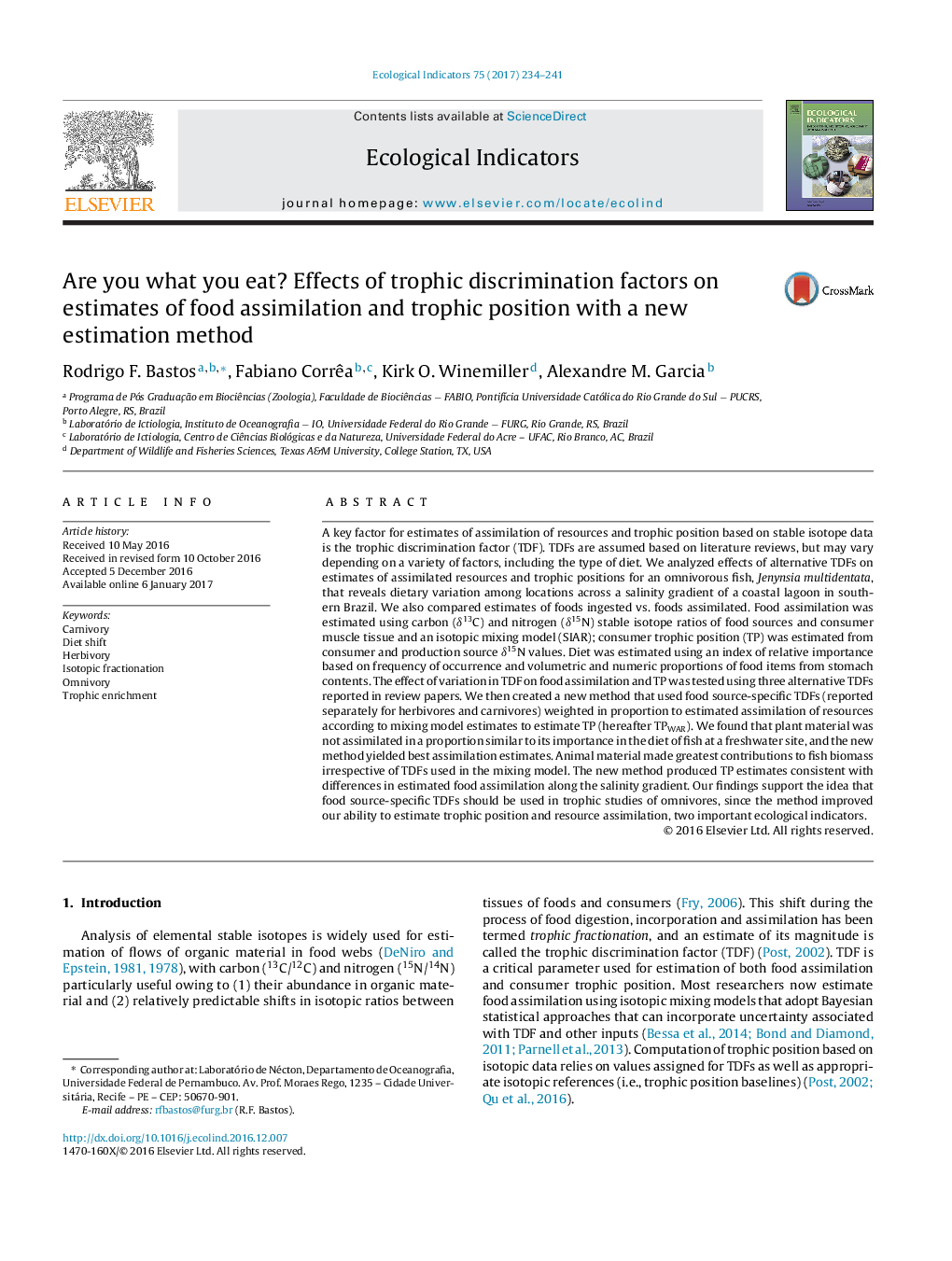| کد مقاله | کد نشریه | سال انتشار | مقاله انگلیسی | نسخه تمام متن |
|---|---|---|---|---|
| 5741814 | 1617127 | 2017 | 8 صفحه PDF | دانلود رایگان |
- A new method to estimate trophic position of omnivores is proposed.
- The method is based on the differential trophic discrimination of each source.
- Mixing models results are used to construct the trophic discrimination factor.
- The new method reflected the differential assimilation of plant and animal sources.
A key factor for estimates of assimilation of resources and trophic position based on stable isotope data is the trophic discrimination factor (TDF). TDFs are assumed based on literature reviews, but may vary depending on a variety of factors, including the type of diet. We analyzed effects of alternative TDFs on estimates of assimilated resources and trophic positions for an omnivorous fish, Jenynsia multidentata, that reveals dietary variation among locations across a salinity gradient of a coastal lagoon in southern Brazil. We also compared estimates of foods ingested vs. foods assimilated. Food assimilation was estimated using carbon (δ13C) and nitrogen (δ15N) stable isotope ratios of food sources and consumer muscle tissue and an isotopic mixing model (SIAR); consumer trophic position (TP) was estimated from consumer and production source δ15N values. Diet was estimated using an index of relative importance based on frequency of occurrence and volumetric and numeric proportions of food items from stomach contents. The effect of variation in TDF on food assimilation and TP was tested using three alternative TDFs reported in review papers. We then created a new method that used food source-specific TDFs (reported separately for herbivores and carnivores) weighted in proportion to estimated assimilation of resources according to mixing model estimates to estimate TP (hereafter TPWAR). We found that plant material was not assimilated in a proportion similar to its importance in the diet of fish at a freshwater site, and the new method yielded best assimilation estimates. Animal material made greatest contributions to fish biomass irrespective of TDFs used in the mixing model. The new method produced TP estimates consistent with differences in estimated food assimilation along the salinity gradient. Our findings support the idea that food source-specific TDFs should be used in trophic studies of omnivores, since the method improved our ability to estimate trophic position and resource assimilation, two important ecological indicators.
Journal: Ecological Indicators - Volume 75, April 2017, Pages 234-241
